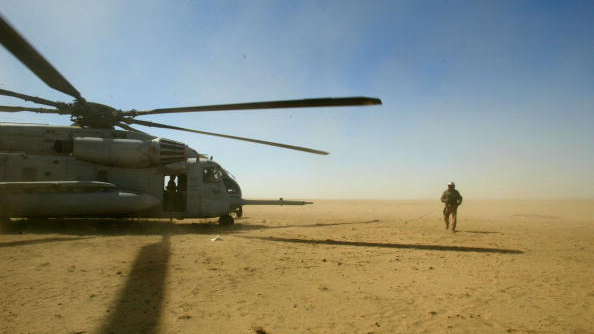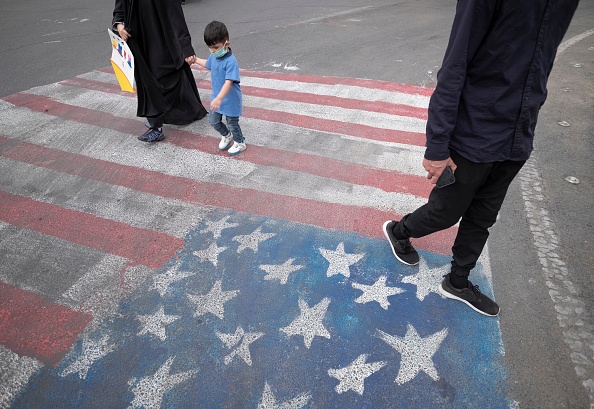
Editor's note: Hamzah Rifaat Hussain is a former visiting fellow at the Stimson Center in Washington D.C. and serves as assistant research associate at the Islamabad Policy Research Institute (IPRI) in Pakistan. He specializes in conflict resolution dynamics and bilateral relations between states. The article reflects the author's opinions and not necessarily the views of CGTN.
On May 24, the Pentagon secured unfettered access for U.S. air and ground forces into Afghanistan with Assistant Secretary of Defense for Indo-Pacific Affairs David F. Helvey lauding Washington's relationship with Islamabad as critical for sustainable peace. While Helvey underlined the importance of supporting the peace process, which has been marred with sporadic acts of violence from the Taliban and blatant violations of the Doha Peace Deal, this strategy of military posturing in Afghanistan as preemptive self-defense raises several pertinent questions.
Firstly, if the objective is to curb the Islamic State chapter in the Khorasan province in the country, which poses the most significant regional challenge in the post-U.S. withdrawal era, then such posturing is understandable on counter terrorism alone. Helvey did mention that regional partnerships are critical towards neutralizing the resurgence of terrorist groups in Afghanistan despite the fact that the Islamic State is actively present, as admitted by U.S. Charge d'Affaires to Kabul, Ross Wilson. Yet what is not understandable is how such military posturing would affect unpredictable scenarios unfolding in the country where everlasting peace as initially envisioned remains elusive.
The exponential rise of Taliban attacks which surged by 37 percent from a year earlier, and the first and second quarter of 2021 witnessing attacks above historical averages indicates a downward spiral. Then there are questions of rehabilitation, reconstruction, disarmament and political mainstreaming after the peace process, which clouds the optimism initially expressed by the Donald Trump administration when signing the February 2020 Doha Peace Deal.
Would a breakdown in peace translate into the Pentagon assuming a more assertive role which extends beyond counter-terrorism in Afghanistan? Given the history of U.S. military involvement in conflict zones, there is no clear answer.

An Iranian young boy and his mother walk on the U.S. flag after an anti-war gathering in support of Palestinian children, in central Tehran, May 24, 2021. /Getty
An Iranian young boy and his mother walk on the U.S. flag after an anti-war gathering in support of Palestinian children, in central Tehran, May 24, 2021. /Getty
For example, the U.S.'s militarization of the South China Sea is directed at China despite it labeling the Indo-Pacific strategy as guaranteeing freedom of navigation. Another example would be the exorbitant arms sales as a binary between conflicting parties in the Israeli-Palestinian conflict.
The same would also apply to Afghanistan, where a deterioration of the security situation risks translating into assertive posturing on the part of the Pentagon, which entails probable attacks on former stakeholders in the peace process such as the Taliban over reneging on the Doha Peace Deal. The risk of miscalculation also remains high, with Taliban commanders consistently maintaining that U.S. presence in Afghanistan or regional powers such as Pakistan warrants resistance against "occupying forces," which has implications for regional stability. These variables have not been factored in during the Pentagon's push for unfettered access.
Another issue with this strategy of preemption is the symbolism attached to it. Currently, there are no U.S. military assets in Afghanistan, which prompted North Dakota Republican and Senator Kevin Cramer to question Helvey on the exact type of manned or unmanned capabilities that Washington would deploy to deter terrorists from staging a comeback in the country. Helvey's response was to admit that such capabilities cannot be deployed in Afghanistan, which requires facilitation by regional actors such as Pakistan. This will be noted by the Taliban leadership, which has preconditioned the complete withdrawal of U.S. forces from Afghanistan as a prerequisite for peace and the presence of jets, manpower, soldiers and air force commanders in Pakistan can easily be construed as a provocation warranting aggression. These are dangerous undertones attached to what was supposed to be a smooth transition to peace in the war-torn country in the absence of U.S. intervention.
As far as the U.S.-Pakistan partnership is concerned, Helvey acknowledged that Islamabad has supported the Afghan peace process. Yet often sidelined, disparaged or forgotten is the fact that Islamabad too believes that economic and regional connectivity through the China-Pakistan Economic Corridor (CPEC) as part of the Belt and Road Initiative as the key towards everlasting stability in the region, including Afghanistan. This echoes sentiments expressed by Chinese Foreign Ministry spokesperson Zhao Lijian who said that CPEC can be extended to other countries, including Afghanistan, upon the rationale of capitalizing on a conducive environment for trade and infrastructure in the post-U.S. withdrawal scenario. This vision, notably, is completely divorced from military maneuvers and doctrines.
Yet the Pentagon's latest posturing risks disturbing this equilibrium, given the unpredictability of U.S. doctrines and the volatile situation in Afghanistan. With everlasting peace remaining elusive, that in itself is a worrying sign.
(If you want to contribute and have specific expertise, please contact us at opinions@cgtn.com.)

